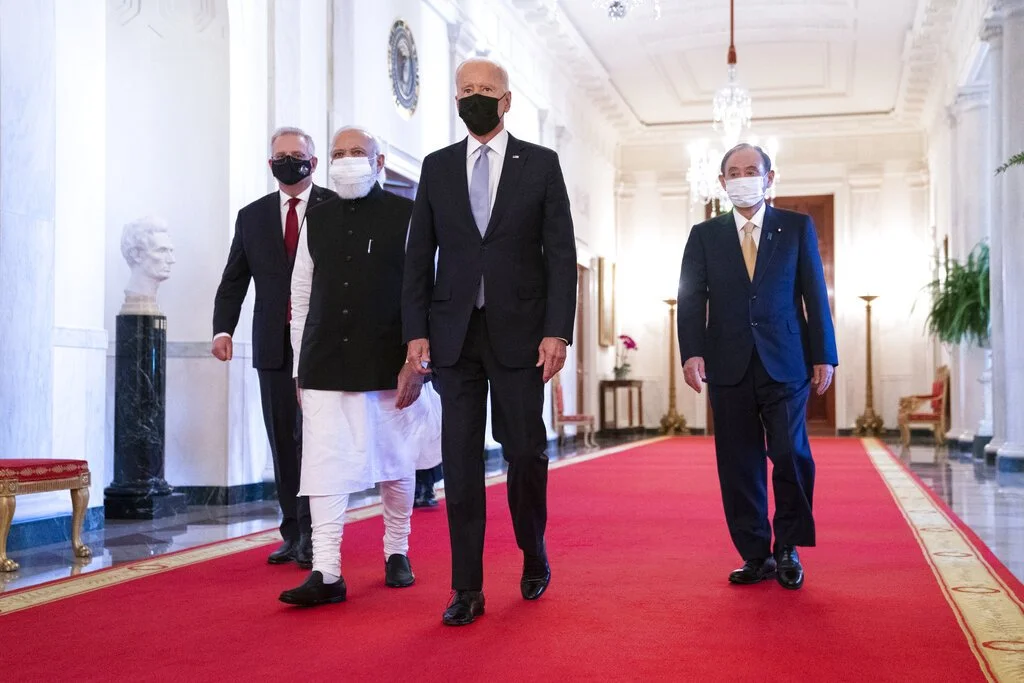Biden’s Quad Summit: The United States’ Subtle Strategy to Counter China’s Indo-Pacific Influence
President Biden addresses the leaders of the Indo-Pacific region, strategizing how the nations can cooperate. AP Photo/Evan Vucci
In the final months of his presidency and his decades of public service, President Joe Biden gathered the leaders of Japan, Australia, and India for a Quad summit in Delaware on Sept. 20, 2024. While the meeting publicly appeared to focus on cooperation in economic development, technology, and security within the Indo-Pacific region, its underlying goal was to subtly counter China’s rising influence.
Spearheaded by the United States, the summit exemplified the government’s intent to reinforce and reignite its influence in the region. It also served as a critical indicator of the US’s strategy in rallying its allies to contain China’s influence without triggering an overt confrontation.
Although the public was led to believe the summit emphasized economic and security cooperation between the four nations, the United States' motives ran deeper, with much more at stake. In recent years, Beijing has made significant advancements in its technology and infrastructure, including 5G networks and the Belt and Road Initiative. The Biden administration aims to bolster its allies' abilities to compete with China in such areas. Focusing on technology cooperation, critical supply chains, and regional defense strategies, Biden has signaled that countering China's influence is his top priority.
The Indo-Pacific stands at the forefront of the US’s broader strategy to neutralize China’s steadily growing power. Since World War II, every US administration has worked carefully to maintain a balance of power and influence in the region. However, China’s recent military expansion, coercive trade practices, and assertive presence in the South China Sea and beyond now threaten this historically fragile equilibrium.
Pictured (from left to right): Prime Minister Albanese of Australia, Prime Minister Modi of India, President Biden, and Prime Minister Kishida of Japan. AP Photo/Evan Vucci
The decision to host the summit on American soil, near Biden’s hometown of Wilmington, Delaware, underscores the United States’ leading role in shaping the Quad’s strategic objectives. The Indo-Pacific is widely regarded as crucial to global security and economic stability. The Biden-led summit highlights that the United States recognizes this reality and is actively taking steps to secure stability and influence in the region. The US was the driving force behind efforts to strengthen alliances in the Indo-Pacific by bringing the leaders of Japan, Australia, and India together in Delaware. In doing so, Biden reaffirmed the US’s commitment to maintaining a free and open Indo-Pacific, directly countering China's increasingly assertive presence.
As expected, the United States must ensure it does not provoke outright confrontation while attempting to neutralize China. If this objective were publicly acknowledged, Beijing would likely interpret it as a form of confrontation, potentially sparking unwanted conflict.
The Biden administration continues to perform a delicate balancing act, carefully curating its diplomatic efforts and ensuring that the Quad’s activities remain non-confrontational. That said, there is no doubt the President’s underlying strategy is to use the Quad to undermine China’s military expansion and trade practices while maintaining diplomatic channels to avoid a cold war-like standoff.
In this sense, US leadership within the Quad is not only about rallying allies but also about maintaining the delicate balance between competition and cooperation. By publicly framing the Quad as a force for regional development and security instead of one centered around shutting down China’s growing influence, the US can strengthen its alliances while avoiding the appearance of direct antagonism toward China.
The Quad summit, hosted by President Biden, marks a significant shift in the US’s Indo-Pacific strategy. Leading efforts to contain China while maintaining a diplomatic front, the US has solidified its role as both a stabilizer and competitor in the region. As China continues to expand its influence, Washington’s subtle yet effective countermeasures, implemented through the Quad, are likely to shape the future of the Indo-Pacific for years to come.


